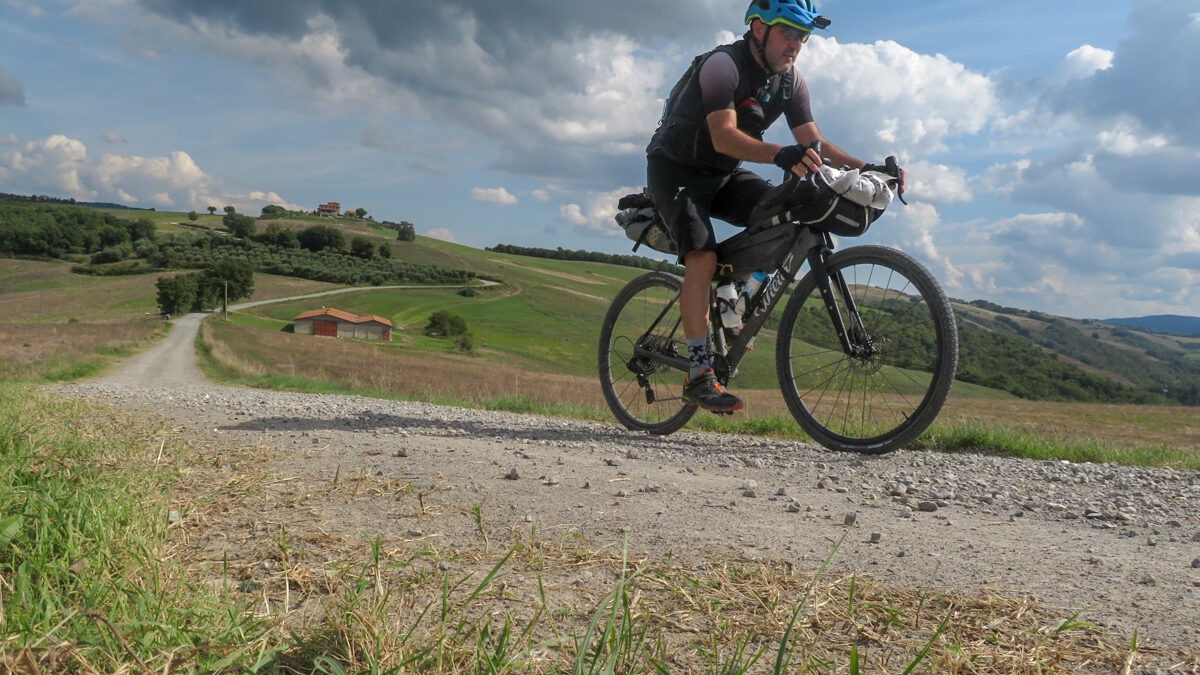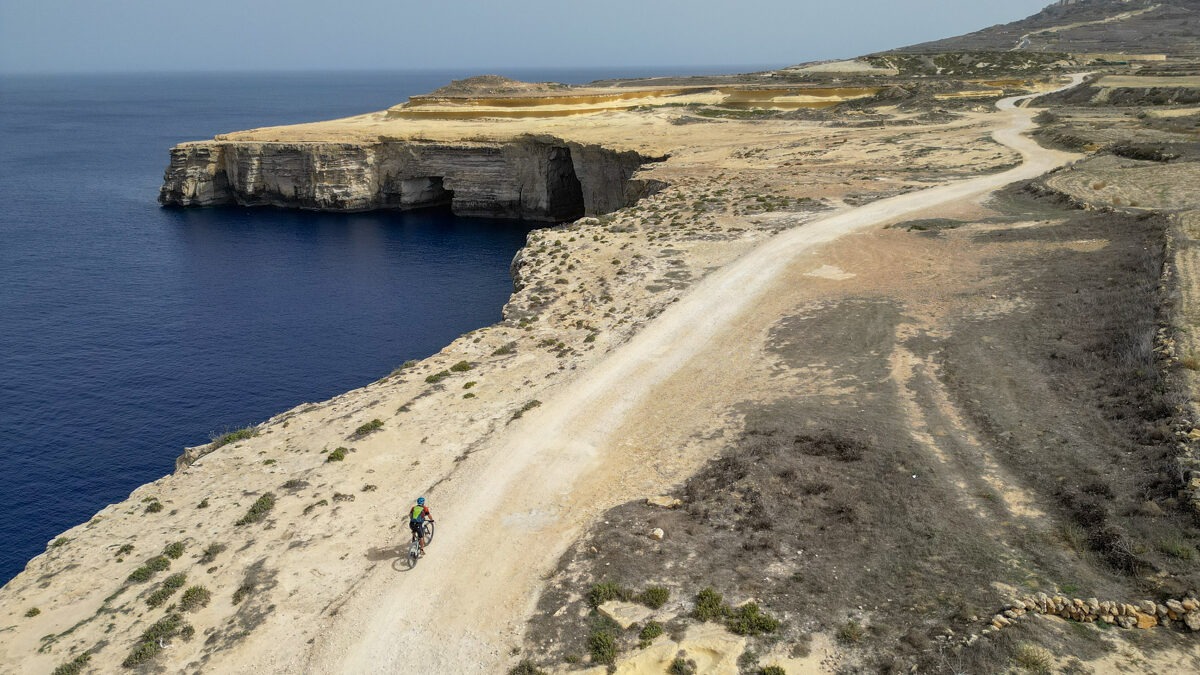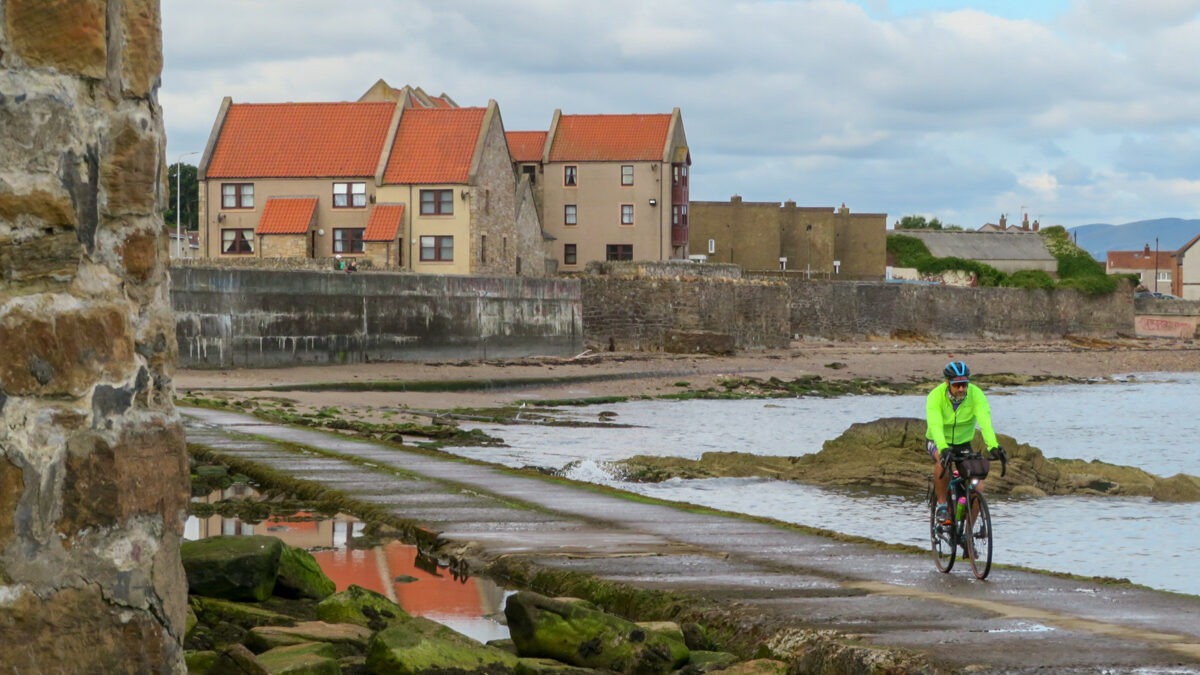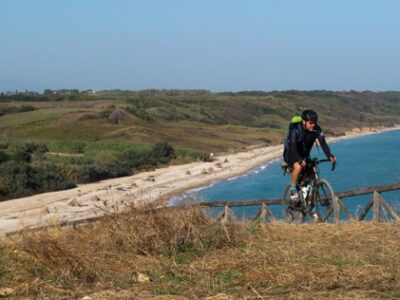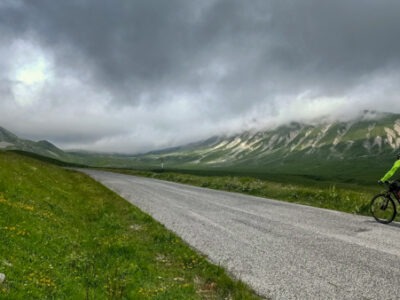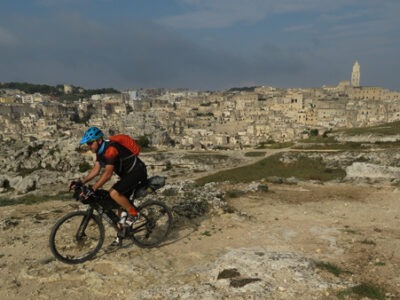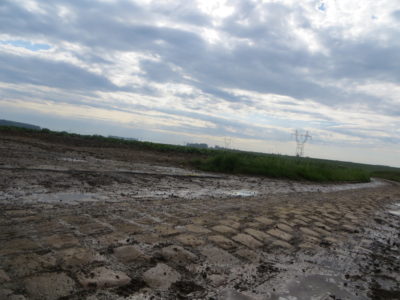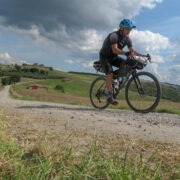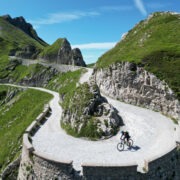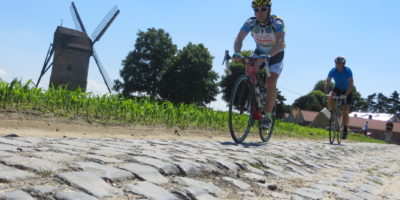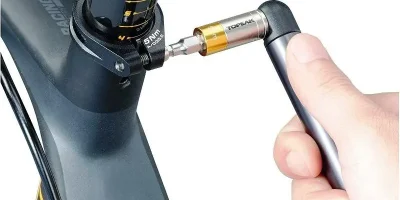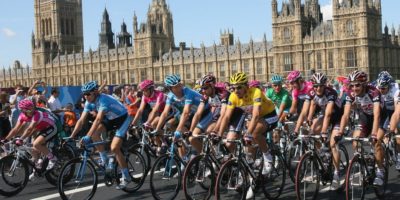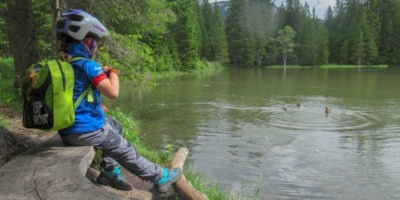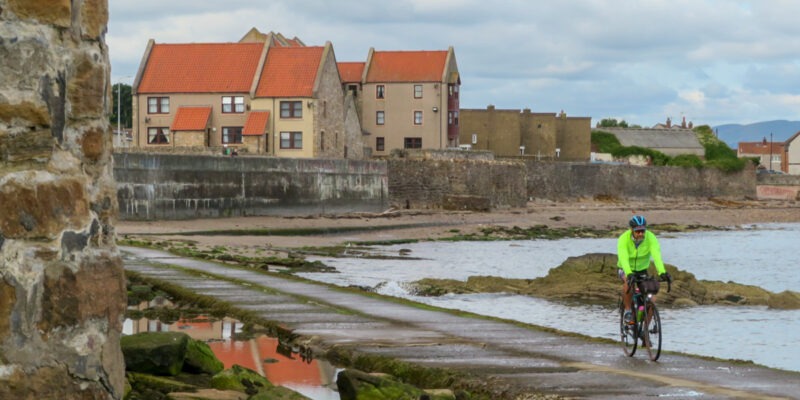
The John Muir Way is a marked route that crosses Scotland from west to east. It’s named after the Scottish naturalist John Muir, and links Helensburgh (north-west of Glasgow) to Dunbar (on the North Sea shore).
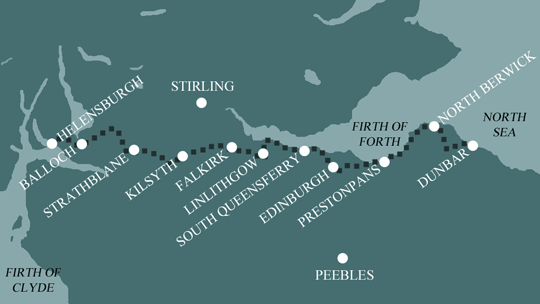
Its 215kms / 134miles are entirely signposted and sometimes have different routes for hikers and cyclists, but some hiking sections can be cycled as well (although some of them – such as the archaeological areas of the Antonine Wall – are forbidden to bikes).
Our tour has followed the entire cycling route, with some diversions before Edinburgh (up to Corstrophine Hill) and in the final part of the last stage. All route details, including official GPS tracks and useful logistical information are available at www.johnmuirway.org.
WHO JOHN MUIR WAS
Born in 1838 in Dunbar, he emigrated with his family to the USA at the age of eleven. Oversea he became famous as environmentalist, naturalist and writer. Although he traveled throughout the world, he is remembered for the time spent in California when he explored the wild areas of Sierra Nevada and Yosemite.
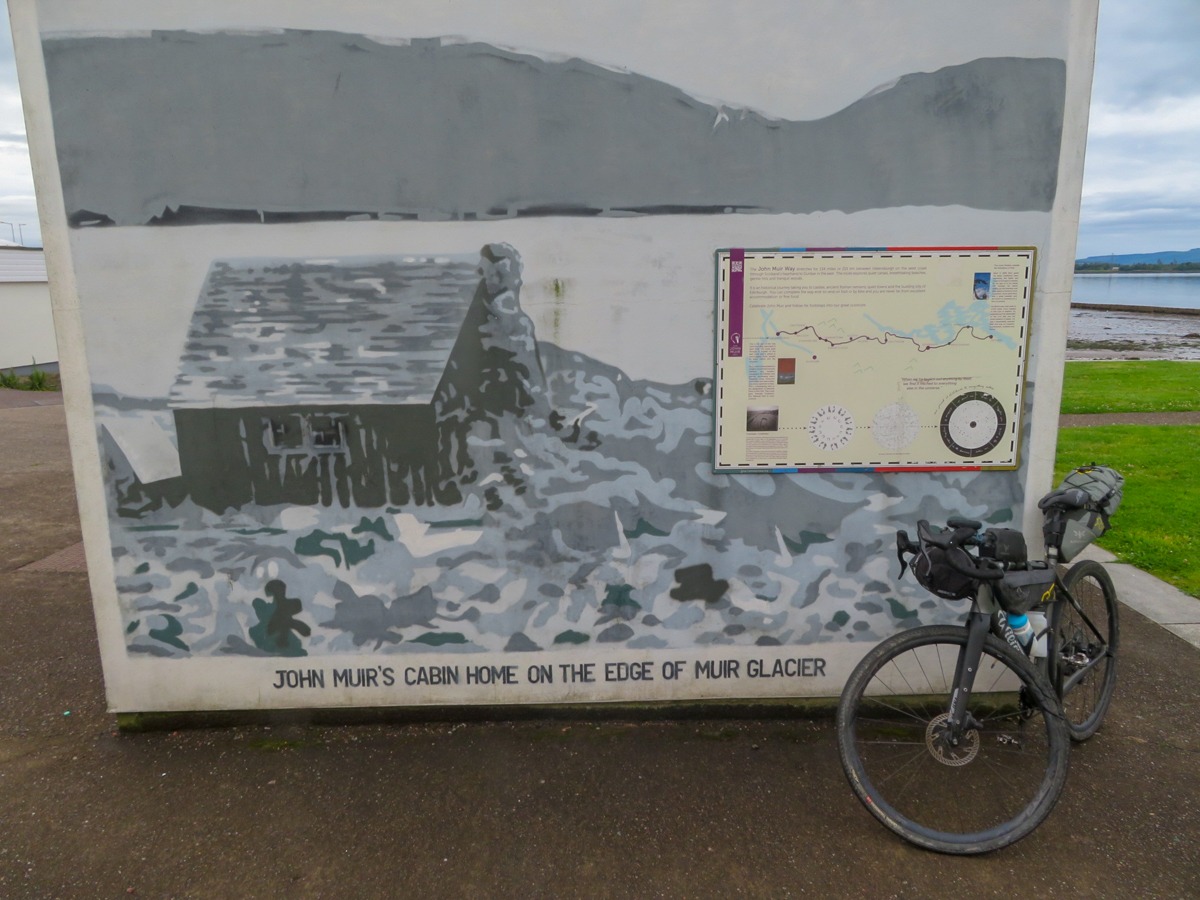
Mural paint at John Muir Way starting point
Yosemite National Park has been estabilished thanks to his initiative, and today John Muir is recognized as one of the most influential person in the movement for nature conservation.
HELENSBURGH TO DUNBAR
The John Muir Way starts from the monument in Helensburgh, on the Firth of Clyde, in front of Greenock port from where John Muir set sailed for the U.S.A.. The arrival point is on the the North Sea, in Dunbar, where the adventure ends near his birthplace, today converted into a free-entry museum.
During our trip we divided the route into three stages, with few climbs and a mainly asphalted surface with some dirt sections. The first stage has some bumpy passages, while the second stage includes short sections on foot (which can be avoided by following the “cycle” route) on the hiking paths of Corstrophine Hill.
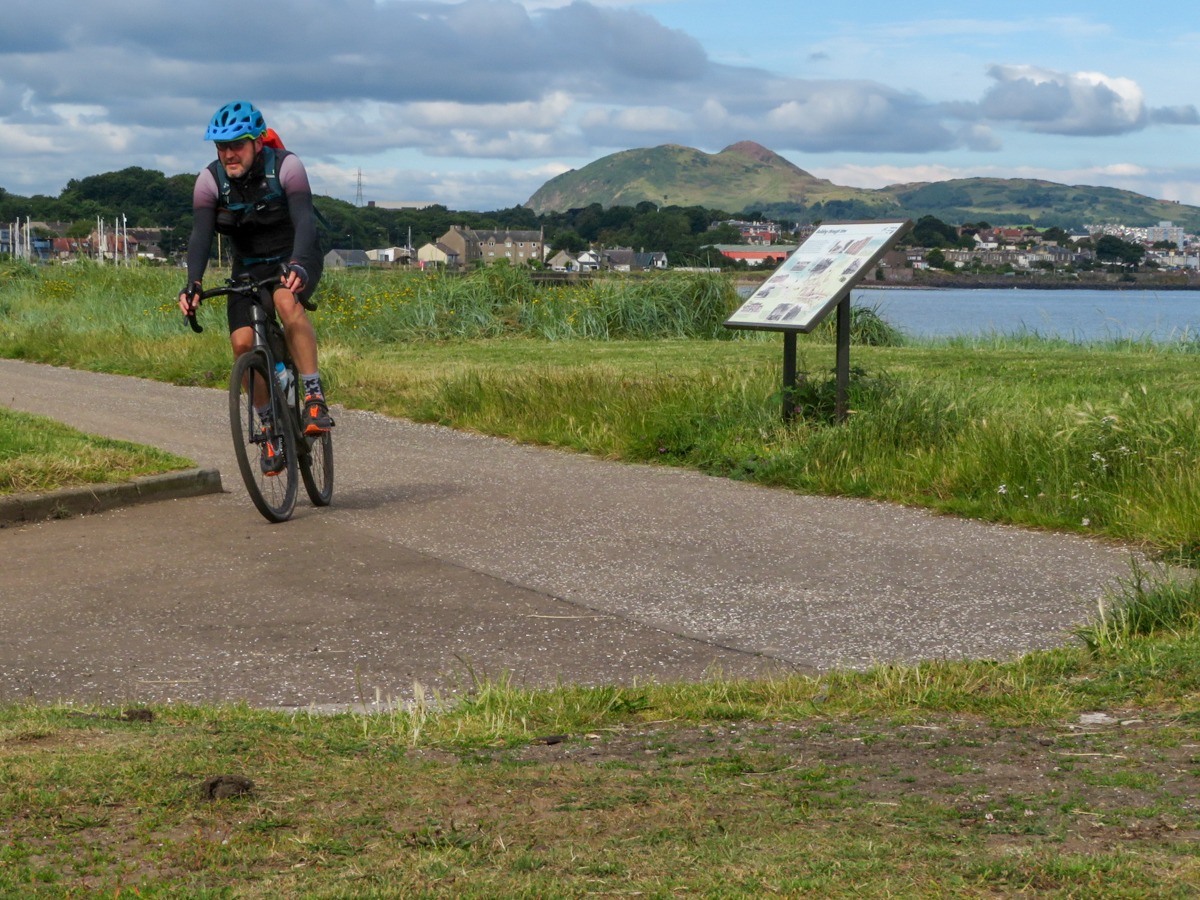
Arthur’s Seat is the backdrop to the arrival in the North Sea
Surprisingly, the John Muir Way is always surrounded by in nature and develops away from main roads following the excellent Scottish cycle network. We rode through old railways line and urban cycle paths, canals and city parks, woods sections and country tracks.
The best bike to use? Gravel bike, definitely, given the several offroad sectors. A more classic touring bike could be an alternative, as long as you follow the cycle route with no diversions.
SCOTLAND COAST TO COAST
From a Scotland’s coast to another, the John Muir Way offers a lot of highlights.
It starts with the banks of Loch Lomond and the Balloch Castle, following part of the West Highland Way (here you can find the GPS tracks) and continues along the fascinating Strathkelvin Railway. It then takes the relaxing Firth and Clyde Canal which links the two “fjords” of southern Scotland, thus arriving at the spectacular Falkirk Wheel, the only “boat lift” in the world. If you want to ride few kilometres more, in Falkirk you can also visit the iconic equine statues of the Kelpies.
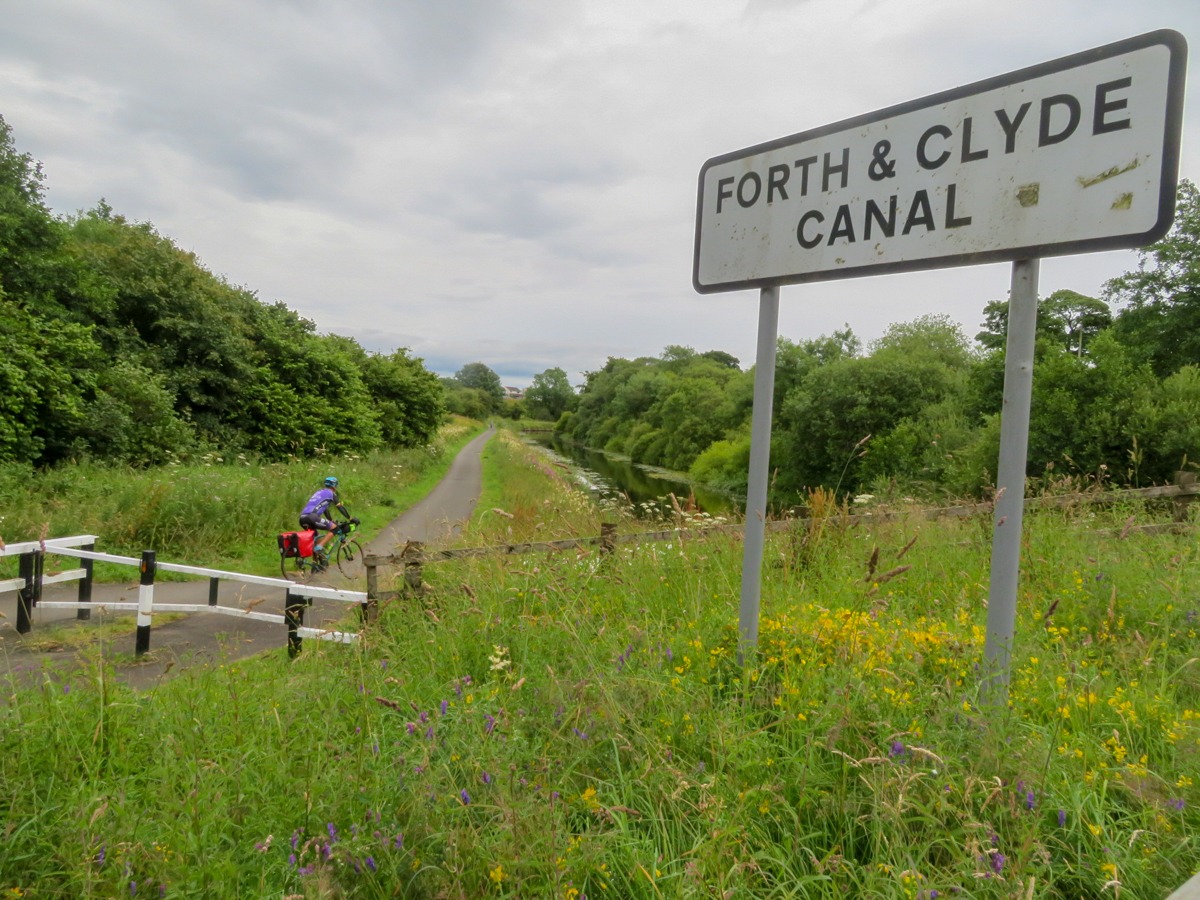
The first stage ends along the Forth and Clyde Canal
Second stage follows the Union Canal crossing the navigable viaduct of the Avon Aqueduct, then moving on the coast of Firth of Forth and towards Blackness Castle and the gigantic Queensferry bridges, ending in the beautiful city of Edinburgh.
The John Muir Way then leaves the capital towards the sea following another old railway (the Innocent Railway) and then follows the coast to Dunbar among beaches, cliffs, lagoons, golf courses, country tracks and a fascinating causeway rideable only at low tide.
WATER, FOOD ND BEVERAGES
The John Muir Way route runs through the most urbanized part of Scotland, so it won’t be difficult to find refreshment points. Anyway be careful, as fountains are quite rare (by the way, Scottish climate won’t make you lose many liquids…).
Scottish specialties instead are not so exceptional, even if the local cuisine offers various choices, such as haggis or the cullen skink soup, various pies, salmon, mac&cheese, the inevitable fish and chips, and meat dishes such as steaks or hamburgers. Potatoes are, of course, the side dish.
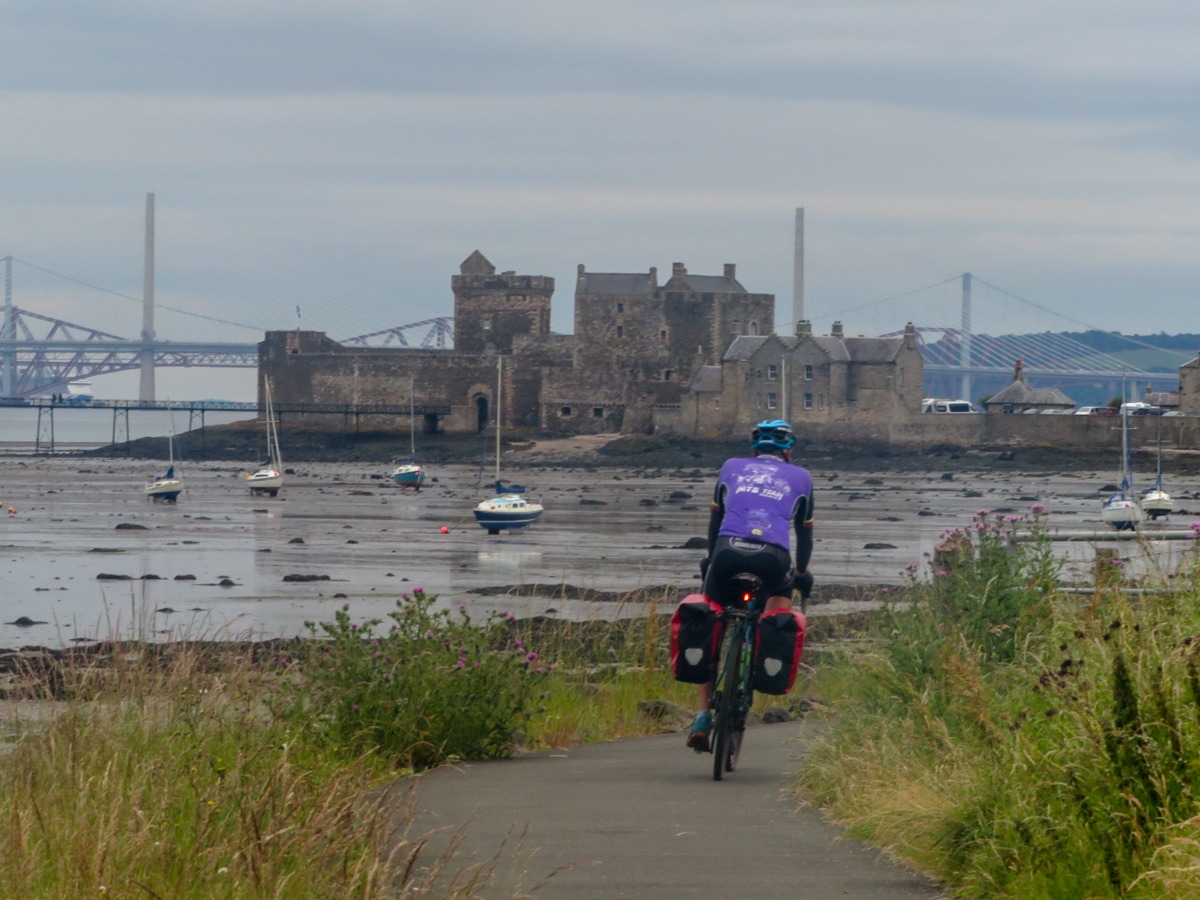
In sight of Blackness Castle. In the background the Queensferry bridges
Do you need an advice? Have a strong breakfast (the traditional full Scottish breakfast with eggs, bacon, beans, tomatoes and sausages) and at lunch look for a bakery along the street: almost all bakeries here offer a wide choice of street food and also have a few tables (for the second stage take note of Manna House in South Queensferry).
Drinks: you will find countless varieties of beers and whisky, the national drink. If you prefer non-alcoholic beverages, don’t forget to try Irn-Bru, sometimes advertised as “Scotland’s other national drink”.
LOGISTIC INFOS
Tackling a bikepacking adventure abroad is not always easy, but we try to give you the main information to best organize your John Muir Way.
Arrival in Scotland:
Ryanair, Easyjet and other european companies fly regularly to Edinburgh airport. For bike transport, a sturdy cardbox is a must (max size 160 x 85 x 40 cms) combined with packing material to protect frame and gearbox. We also placed the wheels inside two bags to avoid rubbing or scratches, and putted in the box a pump to quickly inflate the wheels and some packing tape for the return trip.
We then left the box and everything we no longer need at the luggage storage at the airport. The service is expensive (£120 for a week in 2024) but if you are not alone put all the bike-boxes together counting them as a single baggage.
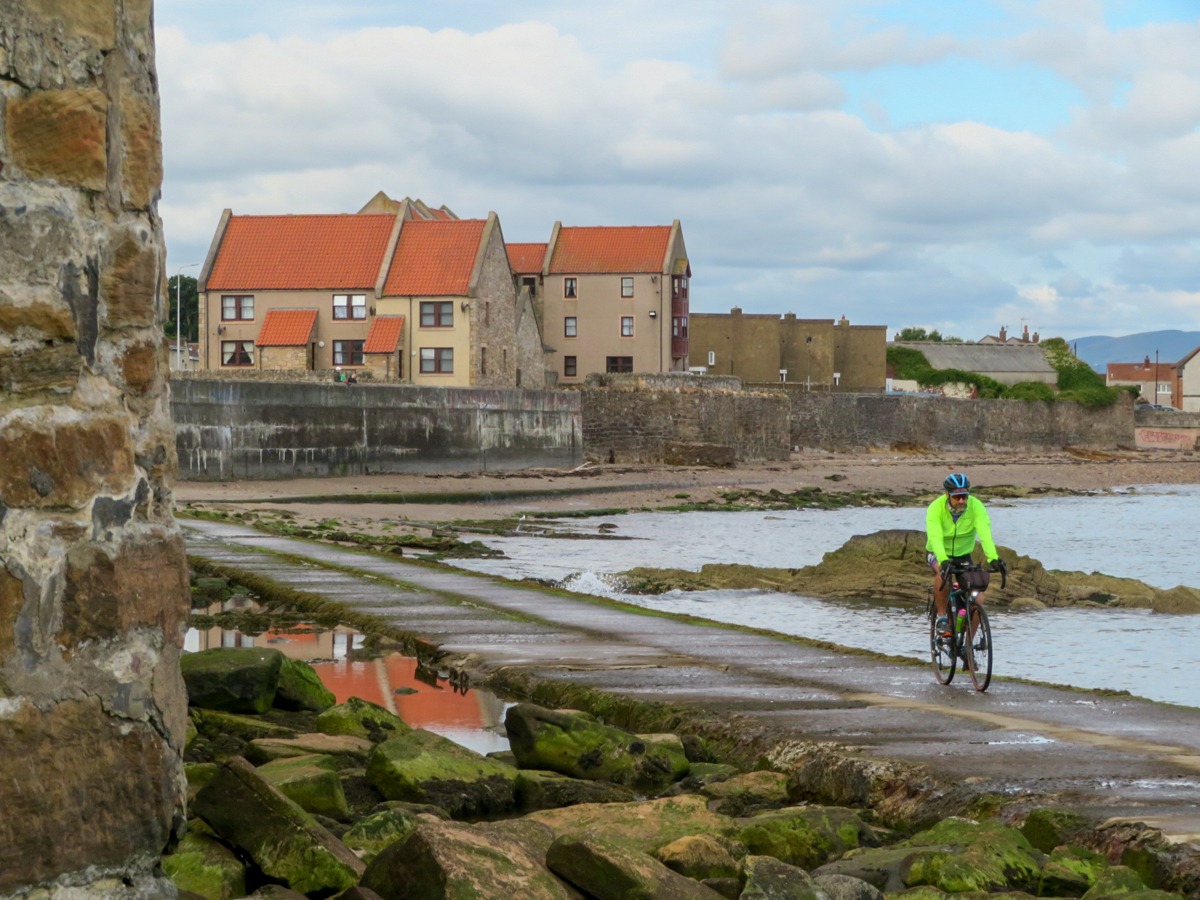
The Prestonpans causeway is accessible only at low tide
Travelling between Helensburgh, Edinburgh and Dunbar:
To reach Helensburgh we took the train from Edinburgh Park (five kilometers from the airport), with a journey time of around two hours.
The same for the return from Dunbar to the airport, with intermediate change at Edinburgh Waverley central station and arrival at Edinburgh Park or Edinburgh Gateway.
Bikes travel for free on scottish railway, but reservation is required for some trains. You can buy tickets online from the website www.scotrail.co.uk or at the ticket offices. Anyway be careful because here trains do not have ID-numbers, so you have to juggle between departure times, expected platforms and final destinations (intermediate stops generally appear on the platform monitor).
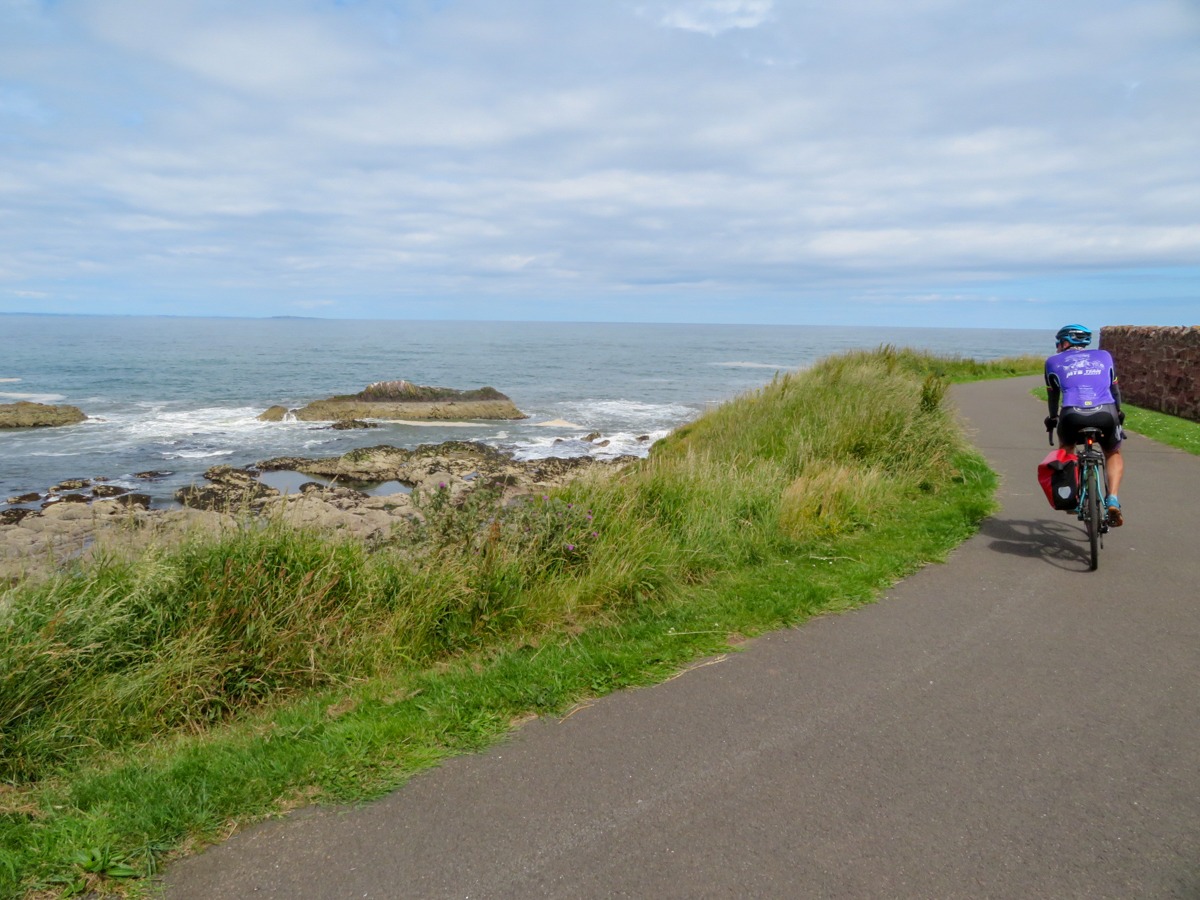
The cliffs of Dunbar
Overnight stays:
This area of Scotland is plenty of hotels, B&Bs and guest houses, although in the summer period – especially between Edinburgh and Dunbar – the high demand causes low availability and rising prices. We preferred to stay in international brands such as Premier Inn or Travelodge, which guaranteed us quality standards, strong breakfasts and space for bikes (Travelodges allowed us to bring bikes into the room).
Our Scottish adventure actually lasted an extra day: this allowed us to sleep for two consecutive nights in Edinburgh and tackle a beautiful bonus-ride in the Pentland Hills (here the GPS track).
The best period to ride the John Muir Way?
Southern Scotland is not as cold as you might think, and some cyclists ride along the John Muir Way all year round. Anyway, the best months are the summer ones (July and August), when average temperatures are between 15 and 20 degrees.
The real unknown is the weather, which can give you the classic “four season in a day”. However, it is more likely to encounter overcast skies, variable climate and some sporadic drizzle brought by the wind: rainproof equipment is therefore a must.
THE STAGES
First stage:
- Helensburgh – The Falkirk Wheel | 78,2 kms and 560 meters of ascent
- Link to GPS track
- Accommodation in Helensburgh: Riva boutique Hotel or Maybank Guest House. We actually stayed overnight at County Hotel in the nearby suburb of Craighendoran, with the in-house vegetarian restaurant Meatless Marvels.
- Food in Helensburgh: The Commodore or Riverhill Courtyard.
- Accommodation in Falkirk: Premier Inn Falkirk Central, two kilometers from the Falkirk Wheel following the Forth and Clyde Canal.
- Food in Falkirk: Rosebank The Beefeater (for Premier Inn guests ony) or the nearby Copper Top.
Second stage:
- The Falkirk Wheel – Edinburgh | 66,3 kms and 530 meters of ascent
- Link to GPS track
- Food: Edinburgh offers choises for all tastes and budgets, although we advise you to avoid the tourist spots of the Royal Mile. Instead, move to Grassmarket where you find Fiddler’s Arm or one of the many pubs in the area which can also be booked online.
- Accomodation: Travelodge Edinburgh Central.
Third stage:
- Edimburgo – Dunbar | 65,1 kms and 260 meters of ascent
- Link to GPS track
- At the end of the stage we suggest to return by train to Edinburgh and sleep two nights in the same structure.
- If you prefer to stay near the airport, you can find several hotels not far from the airport. We choosen the cheapest: Travelodge Edinburgh Ratho Airport with in-house restaurant (the latter a bit disappointing).
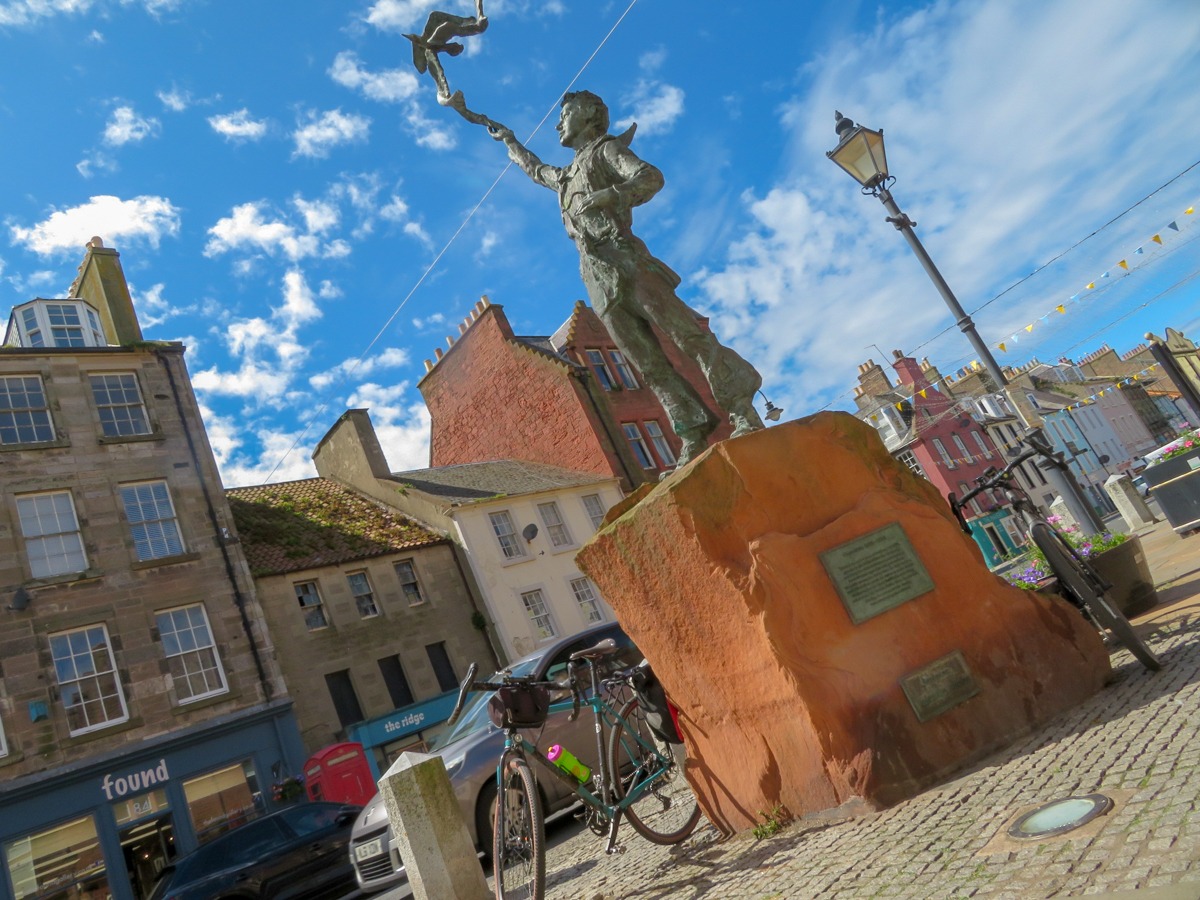
The John Muir statue in Dunbar
